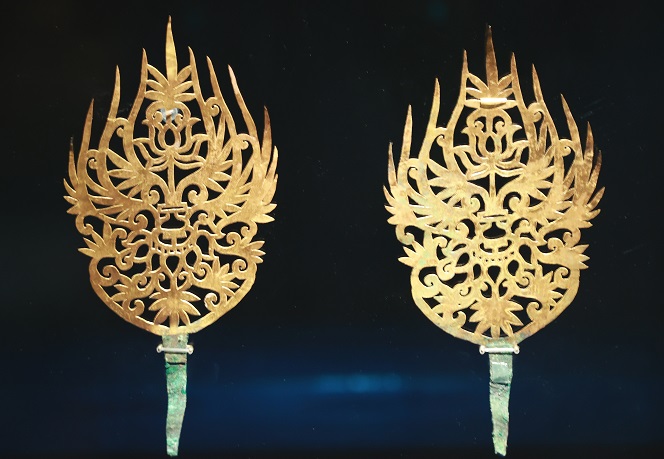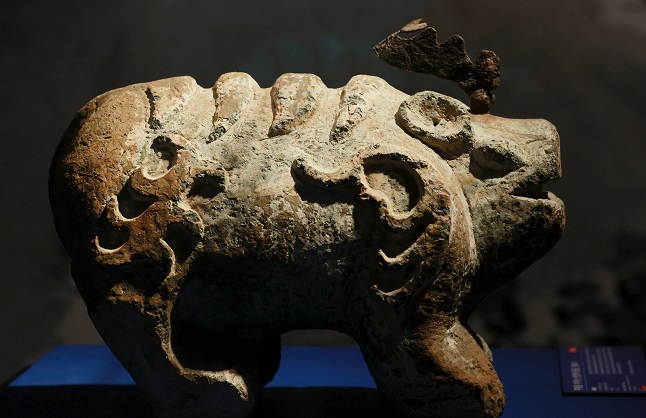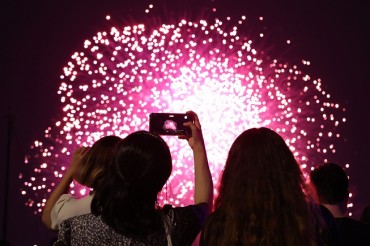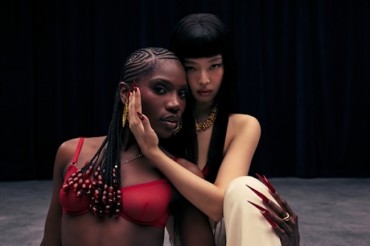
This photo shows gold ornaments used to decorate the crown of the queen of King Muryeong, the 25th king of the Baekje Kingdom (18 B.C.-A.D. 660), displayed at Gongju National Museum in Gongju, 161 kilometers south of Seoul, on Sept. 13, 2021. (Yonhap)
GONGJU, Sept. 14 (Korea Bizwire) – Gongju National Museum on Tuesday opened the first-ever exhibition of all 5,232 artifacts that were excavated 50 years ago from the tomb of King Muryeong, who ruled the Baekje Kingdom in the sixth century.
The exhibition, which marks the 50th anniversary of the tomb’s discovery, offers a rare opportunity to view some of the most valuable cultural assets of the Baekje Kingdom (18 B.C.-A.D. 660), including 12 designated national treasures, and showcases the wooden coffins, jewelry and other articles assigned to Baekje’s 25th king, who reigned from 501-523, and his queen.
“If previous exhibitions on King Muryeong’s tomb were recitals or concertos, this exhibition is a symphony,” Han Soo, the museum director, said during a press conference Monday.
“There will not be another (exhibition) at least within the next generation of all of the artifacts from King Muryeong’s tomb.”
Now UNESCO World Heritage, the tomb where the king and queen were buried together was discovered by accident in July 1971 during construction work on a drainage system in Gongju, 161 kilometers south of Seoul.
A team of archeologists initially dug out some 4,600 articles from the tomb but were soon criticized for conducting a sloppy survey without proper documentation.
Later research produced some 600 more items, bringing the total to the current 5,232.

This photo shows an imaginary guardian animal, “jinmyosu,” excavated from the tomb of King Muryeong, the 25th king of the Baekje Kingdom (18 B.C.-A.D. 660), displayed at Gongju National Museum in Gongju, 161 kilometers south of Seoul, on Sept. 13, 2021. (Yonhap)
Still, as the only royal tomb whose owner and date of creation are known, the discovery has served as a key reference point for historical and archeological research.
The museum said it will display 5,283 documents and materials related to the excavation, in addition to the actual articles.
The exhibit is being held in two halls to provide a look back on the achievements thus far and a glimpse of the tasks still ahead.
In the Ungjin Baekje Hall, the permanent exhibition hall, visitors can view artifacts that were worn by the king and queen, including gold earrings and ornaments used to decorate their crowns, or found near their remains, such as a silver cup placed above the queen’s head.
The special exhibition hall carries displays of the first documents and blueprints from the excavation work 50 years ago and clippings of news articles that described the excitement of academia and the local community at the time.
Also shown are a stone sculpture of an imaginary animal guardian that stood guard inside the tomb, a stone tablet identifying the tomb as that of King Muryeong and a Chinese celadon indicating Baekje had relations with China.
The last section of the exhibit presents future tasks, such as determining how the king and queen’s funerals proceeded and the usage of some of the artifacts.

This photo shows a wooden pillow of the queen of King Muryeong, the 25th king of the Baekje Kingdom (18 B.C.-A.D. 660), displayed at Gongju National Museum in Gongju, 161 kilometers south of Seoul, on Sept. 13, 2021. (Yonhap)
The exhibition will run through March 6, 2022, but some articles, including the king and queen’s wooden pillows and foot rests will only be on display until Sept. 26 and then be replaced with replicas, the museum said.
Baekje ruled over the southwestern region of the Korean Peninsula when it was a part of the Three Kingdoms, alongside Koguryo and Silla.
Until its fall in 660 to allied forces of Silla and China’s Tang Dynasty, Baekje boasted a unique and rich culture that developed over the course of moving capitals three times. Gongju was the second capital.
While Baekje initially absorbed the influences of Koguryo’s culture, it later created its own sophisticated and elegant culture based on Chinese influences.
Historians say Baekje played a central role in establishing a common culture in ancient East Asia.
(Yonhap)





